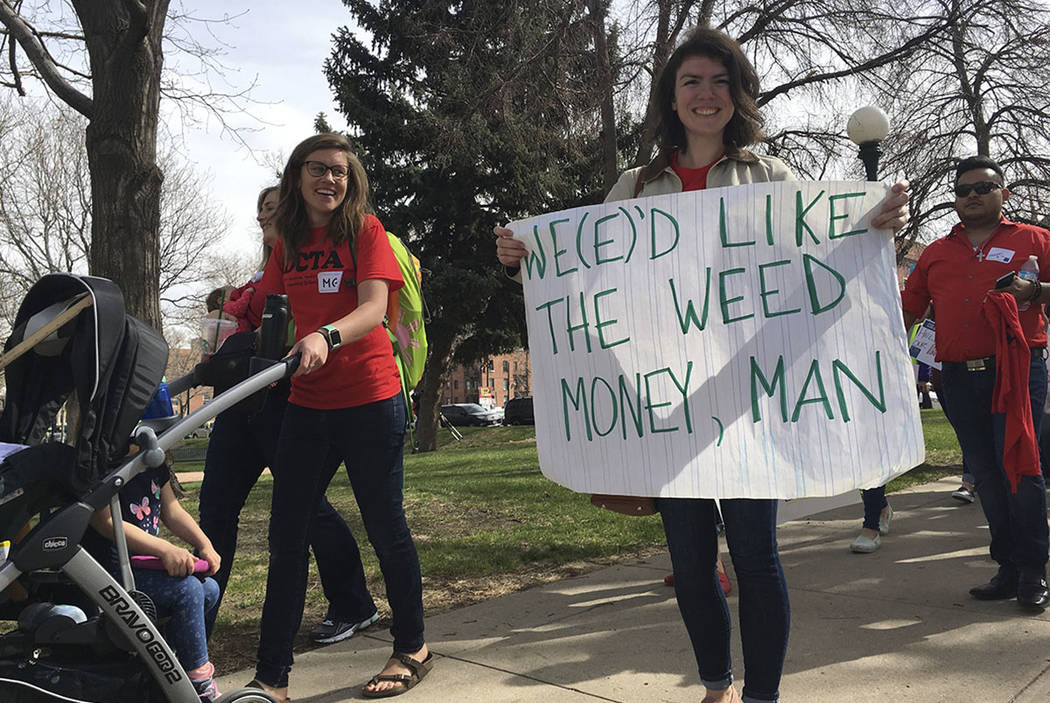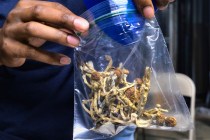Colorado schools still struggling despite pot tax revenue
DENVER — Colorado teachers are protesting this week for higher salaries and increased money for schools, prompting questions about why the state’s booming marijuana sales have not fixed the funding problems.
The 2012 voter-approved constitutional amendment that allowed adults to buy marijuana got a boost from a commitment to send millions of dollars to Colorado schools.
But that requirement amounts to less than 2 percent of the state’s multibillion-dollar education budget, and other marijuana taxes don’t make up the shortfall between what schools need and the state money they get.
In Nevada’s Clark County, the school board recently called for the Nevada Legislature to take action on education funding in the midst of teacher walkouts and protests nationwide. The seven trustees said money from marijuana and room taxes — which they said voters approved specifically to raise education spending — has supplanted funding.
Here are things to know about the relationship between marijuana taxes and Colorado education funding:
How is marijuana taxed?
The first is a 15 percent excise tax charged when marijuana is sold by a grower to a retail store or a business that makes products like candies, lotion or wax that can be smoked or vaporized.
It is based on the state’s calculation of the average market rate for recreational marijuana. Medical pot isn’t subject to the tax.
Customers then pay a 15 percent sales tax when buying recreational marijuana or products.
People buying medical marijuana or products are only charged the state’s general 2.9 percent sales tax, plus any local sales taxes.
Where do the taxes on marijuana go?
The marijuana amendment that voters approved required the first $40 million in taxes on wholesale marijuana to go into a fund for school construction or maintenance.
Dividing up the state sales taxes on marijuana gets more complicated. Ten percent automatically goes to local governments. A $30 million contribution to a state public school fund controlled by the Department of Education also is required.
Starting this fiscal year, the department will distribute that money to all school districts. In the past, the money could only go to rural school districts.
About 72 percent of the remaining sales taxes go into a fund for various programs on substance abuse prevention and treatment, health care and health education.
The education department can apply for a share of that money but competes with other agencies.
The remaining 15.5 percent of marijuana sales taxes goes into the state’s general fund.
Why didn’t marijuana taxes solve the education funding problems?
Superintendents have described the marijuana taxes that flow to schools as a “drop in the bucket.”
While the Department of Revenue reported a record $1.5 billion in marijuana sales last year, the state collected about $247 million in taxes and fees .
That’s far lower than the $822 million that Colorado underfunds its schools by each year.
The 2017 state budget provided $5.6 billion for K-12 education that went to the education department, the Charter School Institute and the Colorado School for the Deaf and Blind.
Marijuana tax revenue provided $90.3 million of that total, or about 1.6 percent.
How do school districts use the marijuana tax money they get?
Public school districts and charter schools can apply for a portion of the $40 million designated for school construction or maintenance each year.
Schools report that their needs far exceed that amount. According to a statewide assessment, schools had about $18 billion in capital construction needs through the end of this year.
Projects awarded a share of the money in 2017 included roof replacements, upgraded electrical service and asbestos abatement.
The education department also has received some grants from the marijuana sales tax fund. Examples include grants focused on behavioral health in schools, a bullying prevention program and K-3 reading programs.
— The Review-Journal contributed to this report.






















